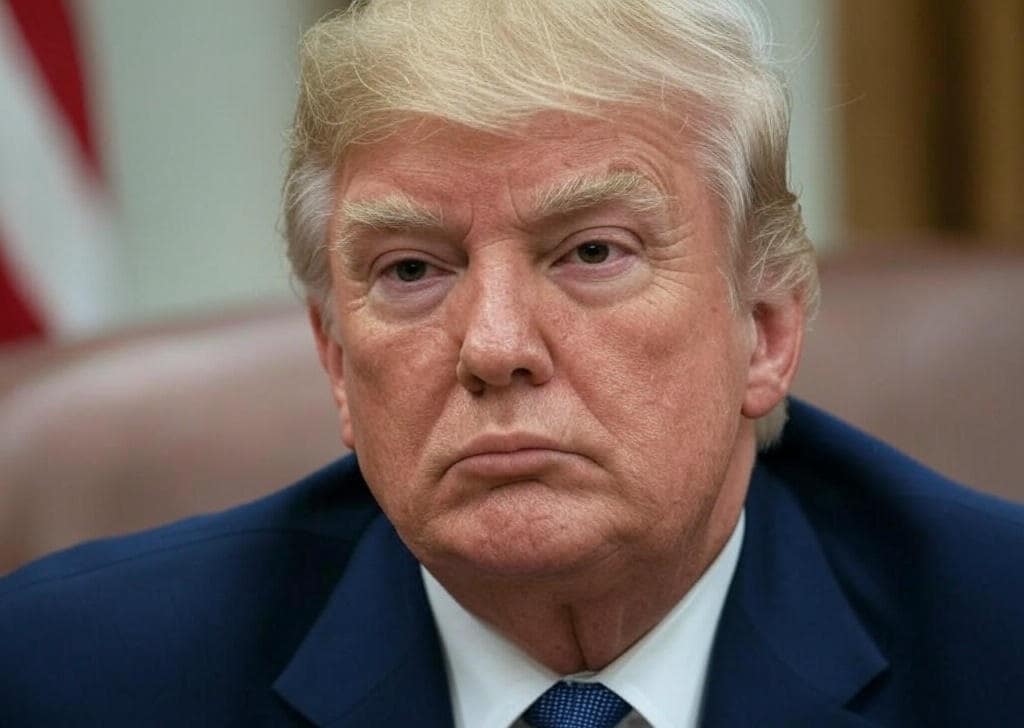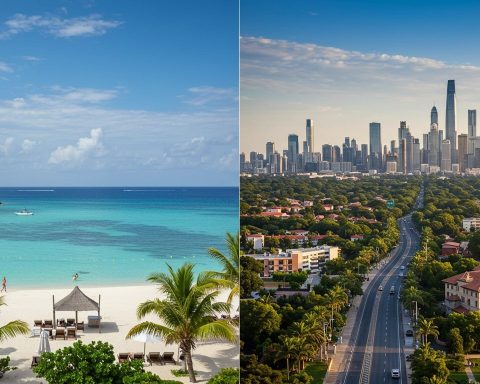Every time I sit down to write about American politics, I’m struck by how polarizing certain figures have become in our national discourse. Few presidencies in modern history have generated as much passionate debate as Donald Trump’s administration. Love him or loathe him, there’s no denying that Trump’s time in office has profoundly reshaped American governance, politics, and society.
The Economic Record: Triumphs and Challenges
When evaluating Trump’s economic record during his first term, it’s important to acknowledge the mixed realities. Prior to the COVID-19 pandemic, Trump presided over what many considered a strong economy. The unemployment rate reached 3.5 percent, the lowest in half a century. His administration implemented the Tax Cuts and Jobs Act in 2017, which represented one of the largest corporate tax cuts in American history.
But did these tax cuts deliver on their promises? The data tells a complicated story. While the administration claimed the tax cuts wouldn’t decrease government revenue, 2018 revenues were actually 7.6 percent lower than projected. Under Trump, the federal budget deficit increased by almost 50 percent, reaching nearly $1 trillion in 2019, and by the end of his first term, the U.S. national debt had increased by 39 percent to $27.75 trillion.
I remember discussing these tax cuts with my brother-in-law (an accountant) over Thanksgiving dinner in 2018. He pointed out something interesting while many of his corporate clients saw significant benefits, the impact on middle-class families in our community varied widely. This personal observation aligns with criticisms that the tax cuts primarily benefited corporations and wealthy Americans, despite promises of broader economic gains.
Regulatory Approach: Cutting Red Tape
One of the most consistent aspects of Trump’s governance philosophy has been his aggressive approach to deregulation. His administration proudly rolled back numerous regulations across multiple sectors, particularly environmental protections and business regulations.
Among the regulatory changes were the elimination of the Waters of the United States Rule, replacing it with the Navigable Waters Protection Rule, and repealing Obama-era fuel economy regulations. The administration claimed these deregulatory efforts would save American consumers and businesses over $220 billion per year once fully implemented.
But the regulatory rollbacks came with significant controversies. Trump dismantled federal regulations on health, labor, the environment, and other areas, including measures that made it easier for severely mentally ill persons to buy guns. The Institute for Policy Integrity found that 78 percent of his regulatory proposals were ultimately blocked by courts or did not prevail over litigation.
Foreign Policy: America First
Trump’s approach to international relations represented a sharp departure from his predecessors, centered on an “America First” philosophy that emphasized reducing trade deficits and rebalancing burden sharing within alliances.
His first term saw numerous significant foreign policy moves, including:
Withdrawing from the Trans-Pacific Partnership (TPP)
Pulling the United States out of the Paris Climate Agreement
Withdrawing from the Iran nuclear deal (JCPOA)
Engaging in direct diplomacy with North Korea’s leader
Launching a trade war with China
Moving the U.S. embassy in Israel to Jerusalem
I attended a foreign policy forum in 2019 where experts from across the political spectrum were discussing these moves. What struck me was how even some traditional conservatives expressed concern about the long-term impact of withdrawing from multilateral agreements. One retired diplomat remarked, “It’s easy to leave the party, but much harder to get invited back with the same level of influence.”
Immigration: A Central Focus
Immigration policy was perhaps the most defining aspect of Trump’s administration, with significant changes both during his first term and in his current presidency.
During his first term, Trump described illegal immigration as an “invasion” and implemented harsh policies against asylum seekers, deploying troops to the border. His administration reduced refugee admissions to record lows and attempted to implement a travel ban targeting several Muslim-majority countries.
His promise to build a wall along the U.S.-Mexico border became a central policy objective, though by the end of his first term, only 73 miles of new barriers had been constructed in areas without previous barriers.
In his second term beginning in 2025, Trump’s immigration policies have become even more aggressive. His administration ordered border patrol agents to summarily deport migrants crossing the border, disabled the CBP One app that facilitated border crossings, and resumed the “remain in Mexico” policy. He’s attempted to end birthright citizenship through executive order, though this has been blocked by federal judges as likely unconstitutional.
Controversies and Constitutional Challenges
The Trump administration has faced numerous controversies and allegations of abuses of power. Among the most significant was his attempt to overturn the results of the 2020 election, which many experts consider his most severe abuse of power.
According to Michael Paulsen, a conservative legal scholar, Trump’s post-election efforts represented a “form of a political coup d’état against our Constitution”. After losing the 2020 election, Trump falsely claimed victory and pressured election officials in battleground states to throw out millions of votes for Joe Biden.
Other significant controversies included:
Conflicts of interest related to his businesses, which led to emoluments clause lawsuits
The politicization of the Justice Department and FBI
The firing of whistleblowers and inspectors general who uncovered wrongdoing
The first impeachment over withholding aid to Ukraine to pressure for an investigation into political rival Joe Biden
In his second term, legal scholars have raised concerns about Trump’s use of executive power. Many of his executive orders have been challenged in court, with some judges ruling that he exceeded his constitutional authority.
The Executive Orders Blitz: Remaking Government
Trump’s governance style has leaned heavily on executive orders rather than legislative action. In his second term, he issued more executive orders on his first day than any other president. By March 7, 2025, his orders and actions had been challenged by over 100 lawsuits nationwide.
Some of the most notable executive actions in his second term include:
Attempting to end birthright citizenship
Dissolving federal diversity and inclusion programs
Establishing the Department of Government Efficiency (DOGE)
Implementing a federal hiring freeze and forcing remote workers back to offices
Withdrawing from the World Health Organization
Dismantling agencies like USAID
Mass termination of federal employees
Personnel and Government Structure
Trump’s approach to staffing government positions has been controversial in both terms. His cabinet in his first term was described by some as “perhaps the most ethically challenged in American history,” with numerous investigations into cabinet members like Interior Secretary Zinke and Commerce Secretary Wilbur Ross.
In his second term, the administration has pursued significant structural changes to the federal government. Trump has initiated mass job terminations of federal employees, with the intent of replacing them with workers more aligned with his agenda. By late February 2025, the administration had fired more than 30,000 people.
The creation of the Department of Government Efficiency, led by Elon Musk, has played a central role in dismantling several federal agencies, unilaterally firing thousands of staff, and reducing administrative functions.
Reflections on a Transformative Presidency
As I look back on Trump’s impact on American governance, what stands out most is how fundamentally he has challenged established norms and institutions. Whether you view his presidency as a necessary disruption of an entrenched bureaucracy or a dangerous assault on democratic guardrails likely depends on your political perspective.
What’s undeniable is that Trump has redefined what it means to be president in the modern era. His willingness to push the boundaries of executive power, his unconventional communication style, and his confrontational approach to governance have created a template that future presidents will either emulate or explicitly reject.
I remember a conversation I had with a political science professor friend last month. Over coffee, she said something that stuck with me: “Regardless of where you stand politically, the Trump administration has given us a stress test of our constitutional system. The question isn’t just what Trump has done, but what our system has allowed him to do.”
That insight captures something essential about this moment in American history. The Trump presidency isn’t just about one man or one administration, it’s about how our institutions respond to unprecedented challenges and whether the guardrails of our democracy prove sturdy enough for the road ahead.
What do you think? Has the Trump administration strengthened America’s position in the world, or has it undermined crucial alliances and norms? I’d love to hear your thoughts in the comments below.








